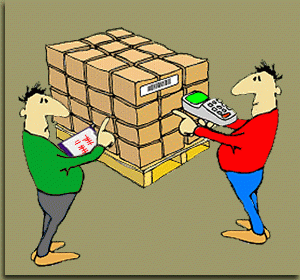Among the most important from the point of view of stable operation of the enterprise accounting activities - accounting for finished products. This procedure, as a rule, covers all stages of the product cycle. That is, accounting for the production of finished products or similar actions can be carried out in relation to its location in the warehouse and shipment to customers.
Bookkeeping is primarily work with documents, based on the meaning of the term. Therefore, the correct filling of papers is the most important aspect of the competent management of the relevant processes. What are the nuances that reflect the work of an accountant in this direction? In accordance with what criteria is the accounting of the output of finished products carried out? Why are there specialized accounts that reflect debit and credit in financial transactions?
What is the finished product?
Before considering how the accounting of finished products is carried out, consider the essence of its subject. Let's define the terminology. What is a “finished product”?
According to the prevailing interpretation among Russian economists, these are products (both finished and semi-finished), which are produced by the production line within the framework of approved standards or technical conditions, and also taken to the appropriate storage facility (warehouse) or transferred to the customer.
There is a legislative source that contains the norms that Russian accountants are guided by when working with figures on finished products. This Regulation type "inventory". What is the finished product, according to him?
It is nothing more than a part of those very stocks, but in the aspect that their purpose is sale. That is, the finished product falls into the final stage of the production cycle and represents assets whose characteristics (of a technical nature, or of high quality) are determined by the terms of the contract with the buyer or other documents.

Accounting for finished products is carried out in terms related to natural or value. In some cases, the methodology of conditional calculus is used. For example, the quantity of coffee issued for sale is not in kilograms or rubles, but in banks. The specific unit with which the accounting of finished products is carried out is determined by the company itself.
There are no strict legal requirements. The main thing is that the information on the available reserves of finished products is reliable, there should be control over how it gets from the factory lines to the warehouse, and then to the customer or other destination. This is necessary from the point of view that, simultaneously with accounting, tax accounting of finished products is also carried out. All documents, therefore, must have signs of authenticity and validity.
How are finished products evaluated?
Finished goods accounting can be done through several methods. Within the framework of the core, an assessment is made of production costs. As a rule, this type of method is applicable to factory lines that are small in number of manufactured goods. If we are talking about mass production, then with a relatively small range of manufactured goods.
There are other methods of accounting for finished products. There is, for example, the so-called conditional assessment method. In this case, the company introduces indicators that reflect accounting, that is, conditional, prices. They can be:
- cost indicators based on standards;
- prices for bulk deliveries;
- retail prices (including VAT);
- market prices (always incl. VAT).
At the end of each reporting period, accounting compares the figures in the framework of one of the above indicators in order to calculate the actual cost of production of goods.
Finished products and documents
Accounting for finished products is almost always carried out through specialized documents. As a rule, these are invoices, acts of acceptance and other primary sources. How is their circulation carried out? Consider the example of using invoices as one of the most common types of primary documents.
Invoices are almost always used when the goods are sold to the buyer. They are written out on the basis of an appropriate order of an official in the company or an agreement with a client. Accounting for the shipment of finished products to the buyer is carried out through several stages. First invoices, the most common documentary form of which is M-15, are issued by the warehouse staff in several copies. Usually at four. Then they are transferred to the accountant, who registers them in a special journal. After - they are signed by authorized employees, for example, the chief accountant.

After passing the registration stage, invoices are returned to the warehouse. The first copy leaves itself financially responsible person most often a warehouse employee, the second is used when issuing other primary documents (usually invoices), the buyer takes the third and fourth. Which, in turn, is signed on all copies.
In many cases, finished products are exported through a checkpoint. Then the buyer leaves one of the copies of the invoice to his employees, and the other becomes the accompanying document for the goods loaded into the cars. In turn, the security service also carries out some kind of accounting for the sale of finished products, registering information on invoices in its journal.
What about invoices, another major type of source document? They are issued by the factory in duplicate. The first within 10 days from the moment when the goods were released to the buyer, transferred in one way or another to the client (by mail, courier, delivered personally), the second factory leaves to itself to use the information from it for the sales book.
Subtleties of workflow
Consider a number of nuances reflecting the work with documents. For what? This can be useful, for example, from the point of view that the audit of finished products accounting and other audit activities may include procedures related to checking the compliance of accounting documents with various standards. What kind of rules apply in Russian practice? They are represented by the following main list:
1. All business activities must be accompanied by supporting documents. As a rule, they have the status of primary.
2. Documents may be accepted for accounting, provided that they are executed in accordance with the form given in legislative sources. If those are not provided there, then the enterprise itself compiles them. There are requirements for the content of documents. They should reflect:
- document's name;
- date of its compilation;
- name of the company that makes it up;
- the content of specific economic activity;
- measuring instruments of operations in financial or physical terms;
- job titles of those involved in a specific economic activity;
- signatures of relevant officials.
3. Who has the right to sign primary documents? The list of these persons is determined by the head, in agreement with the chief accountant. If such positions are not defined, then they themselves sign the documents.
4. It is desirable to draw up primary documents at the time of the business transaction. If it does not work out, as soon as possible after its completion.
5. It is possible to correct the initial documentation, but signatures certifying the adjustment are necessary on the part of those persons whose autographs are already in the papers.The date when corrections are made is indicated.
Accounts
Bookkeeping, as a rule, uses special accounts for the accounting of finished products. If we are talking about the availability and movement of products, then the one that has the number 43 is used. It is called: "Finished products". In turn, if we are talking about goods for sale, then another account is used - number 41 "Goods". Using appropriate registration units, for example, the cost of work and services can be recorded. For this, account 90 "Sales" is used. In some cases, synthetic accounting of finished products may also use account 40, but not always. It is called Product Launch.
How is the 43rd account used? In it, products are first taken into account, going down from cost, and recorded in debit. In turn, when it is shipped, it is already deducted from the credit of the 43rd account. Then all operations are reflected in the new registration unit - the 45th. It is called "Goods Shipped." In some cases, account 90 "Sales" is used.
Use score 40?
We said above that the organization of accounting for finished products in Russian practice is most often accompanied by the use of account 40 "Product release". What are the nuances of its correct use?
The debit of this account is used to fix the cost of production (or work and services) based on actual values. Credit - to reflect the standard cost (or planned). If we are talking about the first option, then there is a write-off from account 20, which is called "Main Production", 23 or 29. In all cases - from the loan and, accordingly, to the debit of account 40.
What if we are talking about reflecting the normative (as well as planned) cost? Then the corresponding write-off occurs from the 40th credit to the debit of the 43rd account. Or, if applicable, the 90th and other types of accounts.
Stock accounting
How is the inventory of finished products and goods in stock carried out? In principle, the basic rules are the same as those applied when working with inventory. That is, the main tool of an accountant is cards. There are certainly options when they may not be used. With the technological development of warehouse accounting, this method gains more and more popularity, and, according to many experts, in Russia it becomes the main one. In this case, revolving statements are drawn up using specialized accounting programs.

As in the case of inventories, accounting for finished products and goods involves the use of special registration price tags. Also, bookkeeping can develop accompanying guides and manuals that reflect the need to accrue taxes on finished products, as well as, for example, for which customers the goods are intended.
One of the documents specific for accounting for finished products is form No. 16a. This is a statement in which the following data types are recorded:
- date of payment request, as well as the number of the relevant document;
- name of the supplier;
- figures on the volume of shipped products (indicating its types);
- marks reflecting the fact of payment of bills.
In the statement, the figures for finished products can be recorded at discount prices, as well as selling prices.
Inventory
Having considered how the accounting of finished products in the warehouse is carried out, we will study such an aspect of work as inventory. For what? This, as well as work with inventories and work with a warehouse, is the most important function of accounting.
In principle, an inventory is carried out in the same way as work with materials. The expediency of this procedure may consist in, for example, if the goods are shipped, but at a particular point in time has not yet been paid by the buyer. The accountant can thereby check to what extent the amounts reflected in the relevant accounts are justified.

As for the goods that are shipped, but have not yet been paid by the customer, inventories are compiled on them.They contain the name of the counterparty, the name of inventory, the date of shipment and statement, information on settlement documents, as well as the amount payable.
If surplus products are detected as part of the inventory, they are estimated based on market criteria that were relevant at the time of inspection, and then included in the list of non-operating income. That is, the debit of accounts 43, 41 is written off to the loan of the 91st, which is called "Other income and expenses".
Accounting and sale

In some cases, the manufacturer of the goods deals with the costs that are associated with the sale.
If you summarize them with the costs associated with production, you get the full cost of goods.
The accounting for the sale of finished products is also carried out. How?
The main operations are reflected in the 44th account. It is called "Costs to sell." What is usually part of the costs associated with the sale?
First of all, these are the costs associated with packaging, purchasing containers. Also included are the costs of transporting finished products. In many cases, commissions paid to intermediaries. Often - the cost of advertising and representative functions of factory employees. What are the main mechanisms for accounting for the sale of finished products within the framework of the 44th account?
The debit records information about what expenses were incurred. On credit - information about the corresponding write-offs. In this case, the amount of costs can also be debited to the 90th account, which is called "Sales", in full or in part. The specificity of the company’s activity matters. If the account is kept by the organization engaged in the factory production of goods, then the costs of packaging and delivery of goods are written off to the 90th account. If the company is engaged only in trade, then only transportation costs are written off.
Cost price
Having studied how the sales of finished products are accounted for, we will study another useful set of information relating to accounting in production. Namely, those that relate to cost. What is included in it? Typically, the following components:
- material costs;
- depreciation of equipment;
- labor compensation and related payments to state funds;
- other costs.
We consider each of the items separately. We are talking about material costs - the aggregate cost of resources consumed by the factory in the course of direct production. As a rule, these are raw materials, fuel, electricity. This may include various kinds of semi-finished products - spare parts, parts or workpieces that are subject to subsequent high-precision processing on the company's equipment.
Depreciation of equipment means the amount of the corresponding deductions associated with the need to restore the functions of the equipment that forms the main production assets. Their calculation is based on the indicators of the book cost of equipment and other norms governing the specifics of these economic activities.
The next item is remuneration. It includes salaries, bonuses - both under an employment contract, and for special merits to the company, compensation payments. The salary also includes the costs of employees who work outside the main staff of the company.

In most cases, labor compensation is associated with the deduction of the corresponding amounts to state funds - PFR, FSS, MHIF. This is not done only if the work is outsourced or it is performed by employees as part of outstaffing contracts.
Other costs include the payment of taxes and other fees to the treasury, mandatory payments to the appropriate budgets for emissions of polluting substances, deductions to banks for the use of loans and other borrowed obligations. Usually here (and not in labor compensation) travel expenses, expenses for retraining of specialists and their further training are included.Other costs (and not material costs) include communication costs.

How is the accounting of finished goods production carried out on the basis of the listed criteria that form the cost price? In this area of economic activity, as a rule, specialized accounts are used. Namely:
- 20th, which is called "Main Production" (debit);
- 23rd, also a debit - "Auxiliary production".
The accounting of used resources is also recorded in a special account - the 10th, called "Materials". Labor compensation is recorded in the 70th account, which is called "Settlements with staff."
For other expenses, as a rule, a separate account is applied - under number 26. It is called "General expenses". If you take a debit - it records the annual costs. The loan is debited based on the purpose of the expenses. The structure of expenses related to the category of general business is regulated, among other things, by a number of articles of the Tax Code of the Russian Federation, for example, 253, 254, 255th. There are also a number of guidelines reflecting how the cost of production should be calculated.
Cost accounting
Accounting for the cost of finished products involves the use of several types of product valuation. Namely:
- accounting for the totality of all costs associated with the development of products;
- summation of development costs and selling costs (which, as a rule, are not reimbursed by the customer or buyer);
- in accordance with contract prices;
- at retail prices.
As soon as the relevant structures of the factory are posting finished products, the costs are written off for individual divisions of the company. The basis for this is, as we said above, invoices, acts of acceptance or statements.
The accounts within which the cost accounting operations are carried out are 40 and 43. The indicators, as we have already said at the very beginning of the article, can be based on actual cost or accounting prices.
Account Features 46
Among the most interesting accounts used by accountants when accounting for products is the 46th. It applies if work in progress occurs during production. At the same time, this may be accounting for finished products, work, services - in general, all the main types of business activities.
As a rule, the 46th account is used in firms that produce goods as part of long-term cycles or provide services with similar properties - for example, construction contract, engineering research, etc.
If the company has to fix certain stages of the work, then the main criterion for accounting is the actual payments from the customer or buyer. That is, the debit of the 46th account reflects the amount of stages paid by customers. Which, in turn, can be fixed on the loan of the 90th account.
At the same time, the costs associated with the individual stages of the work are to be debited from the credit of the 20th account to the 62nd, which is called “Settlements with buyers and customers”. As soon as all stages of the work are completed, all payments from the customer are debited from the 46th account to the debit of the 62nd. In this case, the total value that has already been recorded in the 62nd registration unit is written off to the amount of advance payments.






